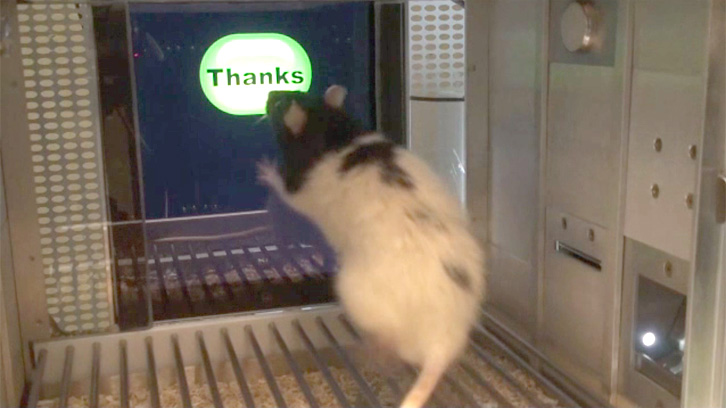iPad’s activation through a cognitive-related neural pattern

Brain-machine interfaces represent a solution for people with physical difficulties to communicate with their physical and social environment. In this work, researchers have identified a functional brain pattern in the prefrontal cortex, associated with cognitive processes, and have used it to activate a screen on a touch device (an iPad touchscreen). The emergence of this electrical brain activity in rat’s brain triggered iPad’s activation.
The protocol was that whenever the rat generated the neural electrical pattern previously established, the screen of the iPad presented a visual stimulus that had to be touched by the rat. Once this happened, the rat was rewarded for its task. In this design, the rats increased the frequency of the pattern of neuronal activity, without modifying its functional properties after use. This neural pattern is linked to cognitive processes and not to motor activities, being of special interest the fact that the rats can generate and use it to control their environment.
Task developed by subjects. 1. Rat goes to the iPad. 2. Rat is expectant near the iPad. 3. Rat touches the iPad cue. 4. Rat goes to the feeder and restarts the cycle. Source: www.divisiondeneurociencias.es (UPO) and Neuro-Com(UAB). The image can be used for content linked to this article.
This work was developed using a device patented by UAB and Universidad Pablo de Olavide in 2011. The device consists in the presentation of a virtual environment where subjects have to solve a learning protocol, operant conditioning type. It allows animal experimentation and coordinates the presentation of audio-visual stimuli on multi-touch screens. In addition, the device supports the identification, registration and selection of electrical brain activity for the management of inputs and outputs of information between devices. This instrumental design was transferred to the industry in 2014.
This work was developed by researchers Samuel Hernández-González, Agnès Gruart and José María Delgado-García, at the Neuroscience Division of Universidad Pablo de Olavide (Sevilla, Spain) and Celia Andreu-Sánchez and Miguel Ángel Martín-Pascual, at the Neuro-Com of the Universitat Autònoma de Barcelona (Barcelona, Spain). The research was published in The Journal of Neuroscience and received financial support through grants from the Spanish MINECO, Junta de Andalucía and Spanish Tatiana Pérez de Guzmán el Bueno Foundation.
Neuro-Com Research Group, Universitat Autònoma de Barcelona
Miguelangel.martin@uab.cat
Celia Andreu-Sánchez
Neuro-Com Research Group, Universitat Autònoma de Barcelona
Celia.andreu@uab.cat
Samuel Hernández-González, Agnès Gruart, José María Delgado-García
División de Neurociencias, Universidad Pablo de Olavide
References
Hernández-González, S., Andreu-Sánchez, C., Martín-Pascual, M.A., Gruart, A., Delgado-García, J.M. A cognition- related neural oscillation pattern, generated in the prelimbic cortex, can control operant learning in rats. Journal of Neuroscience, 37 (24), 5923-5935. (DOI: 10.1523/JNEUROSCI.3651-16.2017) https://doi.org/10.1523/JNEUROSCI.3651-16.2017

